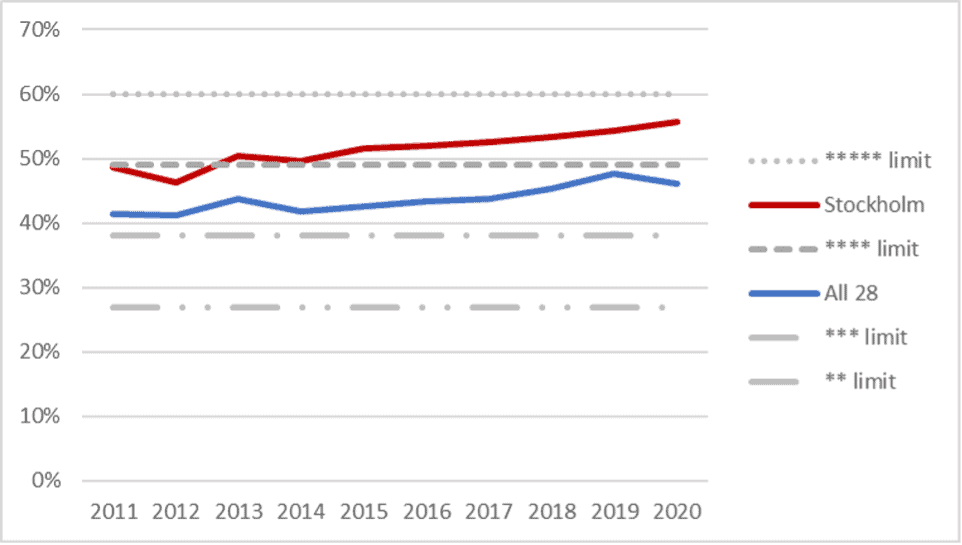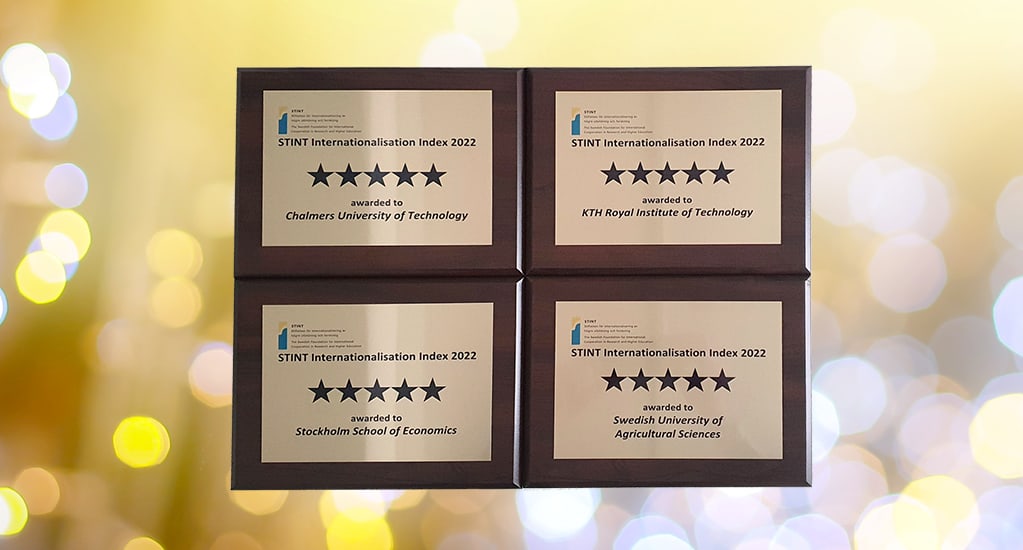STINT, the Swedish Foundation for International Cooperation in Research and Higher Education, annually publishes an index indicating how international Swedish higher education institutions (HEIs) are. It should come as no surprise that this year’s results show decreased student mobility at nearly all HEIs.
Six dimensions of internationalisation are included in the index, and 28 HEIs are rated. The results we now launch are based on data from 2020. One to five stars are awarded per dimension, as well as an overall result. No less than 17 of 28 HEIs lose a star, or in one case, two stars, in the dimension of student mobility, i.e. the proportion of students who had studied abroad or came to Sweden to study. The reason is of course the pandemic, which had a great impact on mobility in 2020.
Nevertheless, the decline in student mobility is largely compensated by the increasing internationalisation of research and teaching staff at HEIs. The proportion of researchers contributing to at least one publication that includes an international affiliation has slowly increased in recent years. One subset of these researchers, measured separately, comprises those who had completed their doctorates outside Sweden. The proportion of such researchers at Swedish HEIs has increased significantly and currently stands at over 16%.
On the whole, this means that two HEIs now receive an additional star each in the overall rankings (Halmstad University and Malmö University), while three lose a star each (Blekinge Institute of Technology, Dalarna University and Örebro University). The four five-star HEIs retain their ratings and thereby also their position as the most international HEIs according to STINT’s Internationalisation Index. These are Chalmers University of Technology, KTH Royal Institute of Technology, Stockholm School of Economics and the Swedish University of Agricultural Sciences.
Several HEIs are close to losing a star. Arguably, the most severe effects of the pandemic were only felt in 2021, and it is therefore possible that this weakly negative trend will continue next year.
Stockholm University is one HEI which, like Halmstad University and Malmö University, defies the difficulties brought about by the pandemic. The figure shows that this university is steadily becoming more internationalised (red line) while the overall development for Sweden has seen a downward trend during 2020 (blue line).

The table shows the Index results of all HEIs. Arrows indicate changes compared to the previous year. For the methodology for the index, see the method description. There are also detailed reports on the development of internationalisation at each HEI in the areas of research, students, staff and leadership since 2011. See STINT Internationalisation Index.
| Data for 2020 | Total | |
|---|---|---|
| Blekinge Institute of Technology | *** | |
| Chalmers University of Technology | ***** | |
| Dalarna University | ** | |
| Halmstad University | *** | |
| Jönköping University | **** | |
| Karlstad University | *** | |
| Karolinska Institutet | **** | |
| Kristianstad University | * | |
| KTH Royal Institute of Technology | ***** | |
| Linköping University | *** | |
| Linneaus University | *** | |
| Luleå University of Technology | **** | |
| Lund University | **** | |
| Malmö University | *** | |
| Mid Sweden University | ** | |
| Mälardalen University | *** | |
| Stockholm School of Economics | ***** | |
| Stockholm University | **** | |
| Swedish U. of Agricultural Sciences | ***** | |
| Södertörn University | ** | |
| Umeå University | *** | |
| University of Borås | *** | |
| University of Gothenburg | *** | |
| University of Gävle | ** | |
| University of Skövde | **** | |
| University West | ** | |
| Uppsala University | **** | |
| Örebro University | ** | |

